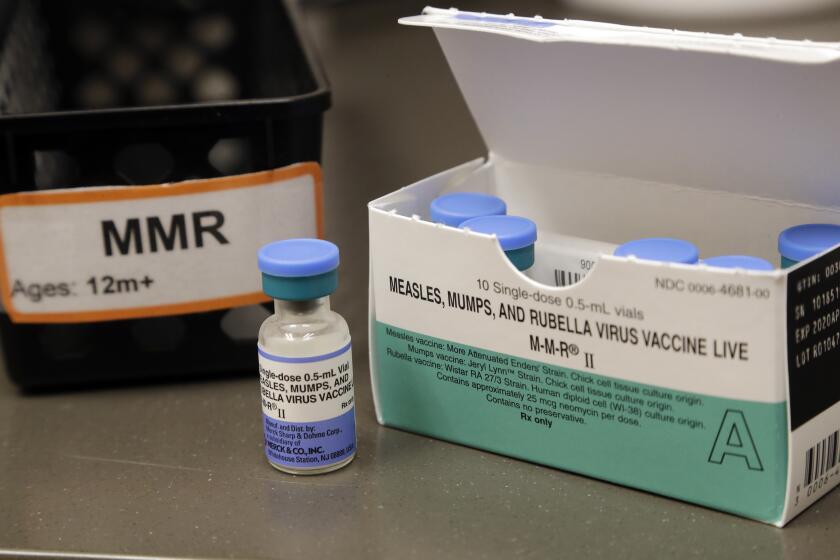To fight childhood obesity, task force recommends screening all kids starting at age 6
- Share via
The fight against childhood obesity should begin in doctors’ offices with routine weight screening for all kids ages 6 and up, according to fresh advice from health experts.
Draft guidelines from the U.S. Preventive Services Task Force urge pediatricians and other clinicians to check the body mass index of children and adolescents to identify patients who would benefit from weight counseling programs. These “comprehensive, intensive behavioral interventions” have been shown to help participants change the trajectory of their weight gain, cutting their odds of a lifetime of obesity.
For kids, the official definition of obesity is having a body mass index in the top 5% for one’s age and gender, based on official growth charts. Ideally, that means only 5% of children and teens are obese. But in America today, 17% of kids have a BMI high enough to fit that description. (Another 32% are overweight, with a BMI that puts them between the top 5% and 15% on growth charts.)
Children who are obese suffer health problems such as asthma, sleep apnea, high blood pressure, insulin resistance and orthopedic issues. They are also more likely to develop psychological and mental health problems, according to research reviewed by the task force.
Reducing childhood obesity would reduce the incidence of these medical issues. But the larger goal of screening is to make a dent in the number of obese children who become obese adults. Most obese teens — nearly 80%, according to long-term tracking studies — are on track to be obese when they grow up.
Overall, childhood obesity has stabilized in the United States. But rates are still climbing for certain groups of kids, such as Latino boys and African American girls. The task force also noted that the proportion of obese kids who qualify as severely obese is growing.
The authors of the proposed guidelines are under no illusion that universal obesity screening will be a silver bullet. Even the best programs to modify kids’ behavior resulted in only a “moderate” benefit, they wrote. But the downside risks of screening are “small to none,” they wrote.
The types of programs that work involve at least 26 hours of counseling over several weeks or months. The more hours involved, the better the results.
Successful programs reviewed by the task force included counseling sessions not just for children who were obese but for parents and other family members as well. They taught patients how to improve their eating habits, including the importance of reading labels on packaged foods. They showed patients ways to exercise safely. They taught kids to keep tempting treats out of sight (and out of mind). And they helped them learn how to set goals for themselves, and monitor their progress toward reaching them.
In 16 clinical trials that tested these programs, most participants gained no more than 5 pounds while growing in height, leading to lower BMIs. Meanwhile, patients assigned to control groups gained up to 17 pounds.
On the psychological side, the programs resulted in small improvements in self-esteem, mental health and quality of life. The changes were too small to be statistically significant.
The task force also considered the pros and cons of two medications — metformin and orlistat — that are sometimes prescribed to help kids lose weight. In clinical trials, both drugs helped patients lose a little weight. But the amount — on the order of 5 to 7 pounds — was too small for doctors to be sure it would make a real difference for patients.
Against that modest benefit, studies found that orlistat (sold under the brand names Xenical and Alli) frequently caused side effects such as abdominal pain, cramps, oily stools and fecal incontinence.
In the end, the task force decided to recommend only behavioral interventions for weight loss. The panel did not consider bariatric surgery, noting that any patient heavy enough to be a candidate could be identified without screening.
The proposed guidelines were released Tuesday. Members of the public may comment on them until Nov. 28.
Follow me on Twitter @LATkarenkaplan and “like” Los Angeles Times Science & Health on Facebook.
MORE IN SCIENCE:
Can too much Halloween candy kill you? This is how much it would take
For a long life, try accepting more friend requests on Facebook




